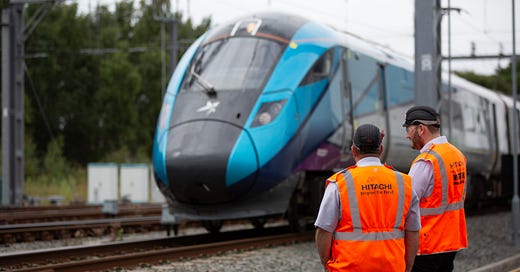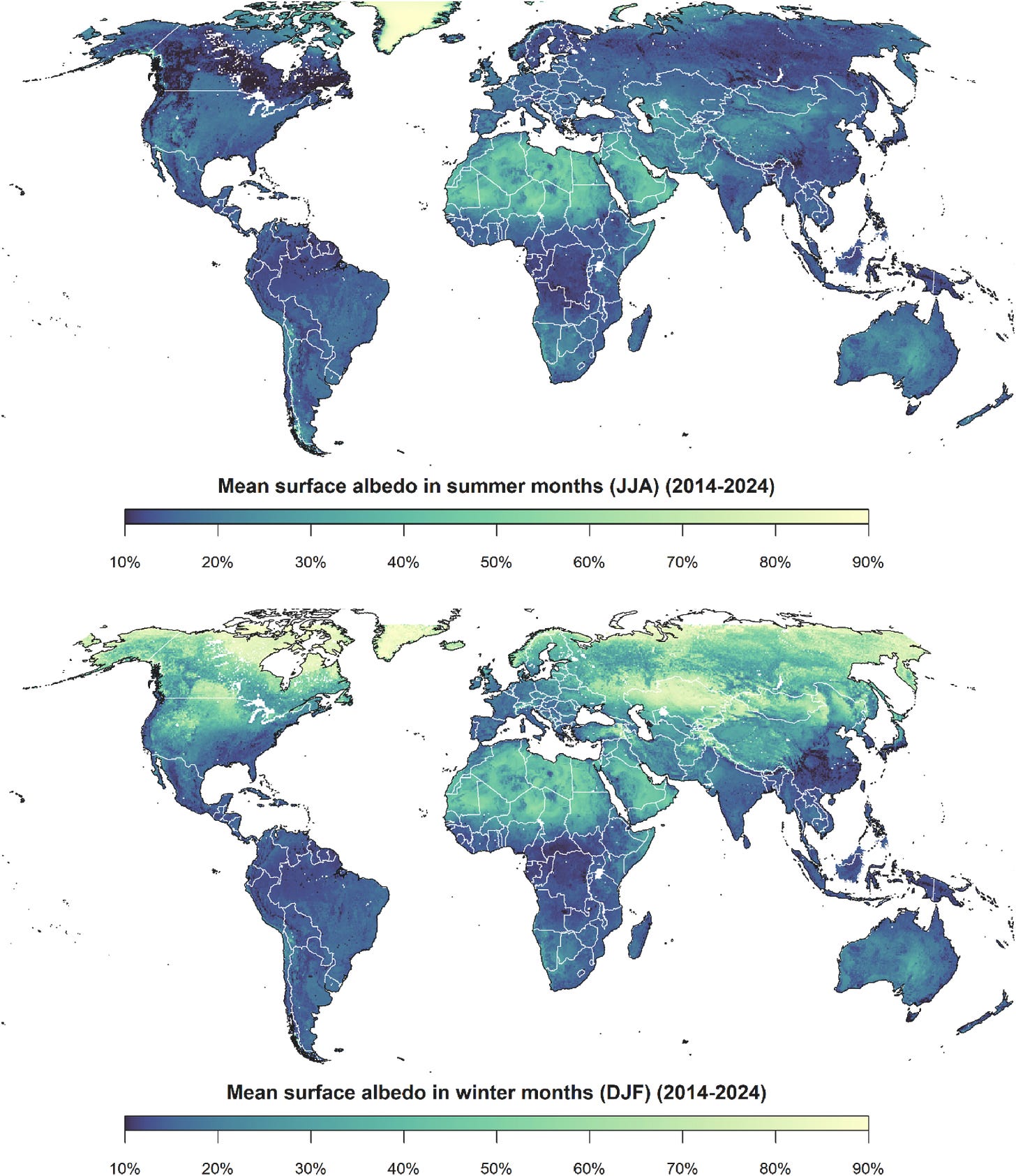The Reengineer Monitor #1
The latest climate resilience and efficiency content, found by me and shared with you.
Hello! This edition of The Reengineer Monitor is available for free as an introductory offer. From late November, these posts will be available to paying subscribers only. If you’d like to sign up, hit the button below and choose a payment plan.
News of a successful battery-powered train trial emerged this week. Hitachi Rail revealed that one of its trains exceeded speeds of 75mph (120kph) while drawing power from a 700 kilowatt battery. The battery can’t supply a whole journey, though. Currently, it powers trains for roughly one mile as they enter and exit stations. The trial found that this technology could reduce noise and also cut fuel consumption by 35-50%.
In the wake of Donald Trump’s election to the US presidency, much ink has been spilt already on what this means for climate policies and action. Trump has frequently criticised efforts to adopt green energy tech, for example. But researchers have already argued that global climate action won’t be blown off course by the new President.
There were signs of support for climate and green energy policies in some US states, says John Farrell, co-director of the Institute for Local Self-Reliance, a non-profit. He listed some key results in this vein in a thread on Bluesky.
A fascinating article in Yale Climate Connections looks at the rise of “greenhushing”, in which businesses cease vocal or explicit support for emissions reductions and other climate-focused policies, and instead make such commitments quietly. Net zero has become too much of a “political football” for some, the author asserts.
Get pumped
In the UK, the charity Nesta is looking for partners for its work on coordinated switching, a means of targeting and encouraging suitable homes for a transition to low-carbon heating systems.
Separately, Nesta is also holding an online event about automated heat pump flexibility. You can register for free here. It will take place on 19 November, from 1230 to 1330 GMT.
There’s a very interesting article in the Big Issue about affordable tiny homes made from eco-friendly materials such as straw insulation.
Speaking of property, a new study in ScienceAdvances describes how the wildland-urban interface (where towns and cities meet nature) has grown significantly in recent years. As a result, the wildfire threat to urban properties has also increased.
Climate risk could make 10,000 New Zealand properties uninsurable, according to a report.
China has connected the world’s second-largest solar plant, the 3 gigawatt Menxi Lanhai Solar Plant in Inner Mongolia. (The world’s largest such plant is also in China.) Back in 2018, I wrote an article for BBC Future about China’s race to build huge solar plants. The biggest at the time was about half the size of the new Menxi Lanhai plant.
A place in the sun
Relatedly, Iain Staffell of Imperial College, London and colleagues have a new paper out that explains how the performance of solar panels can vary depending on geographic location and time of year. The figure below shows differences in albedo, or ground reflectance, which can affect the amount of electricity produced by solar panels.
Thanks to Juraj Mikurcik who, via Bluesky, shared this live map of electricity consumption statistics from around the world.
Richard Lowes of the Regulatory Assistance Project, or RAP, a non-profit, will be speaking about clean heating at two events at the COP29 conference in Baku, Azerbaijan. Both sessions take place tomorrow, 15 November.
Yesterday, the BBC picked up a story ahead of everyone else regarding aircraft contrails. These streams of vapour have a warming effect but a new study from Transport & Environment, an advocacy group, suggests that rerouting some flights just slightly could greatly reduce this impact. It could even slash the warming effect of the most-warming flights by more than a third, in theory. As I noted on Bluesky, such a scheme might end up costing around £4 per passenger.
Hurricane season is not over yet. CNN has an article about the US homeowners building homes to withstand monster storms. I covered the same topic earlier this year, for Wired.
Finally, here’s something different and important. The language of climate change is notoriously jargony and obscure. How do you communicate on this subject effectively using sign language? A team at the University of Edinburgh has come up with new British Sign Language signs for terms including “carbon offsetting” and “tipping point”. You can watch videos of each of the new signs here.
Have you got a story for The Reengineer Monitor? Let me know by sending me an email.






